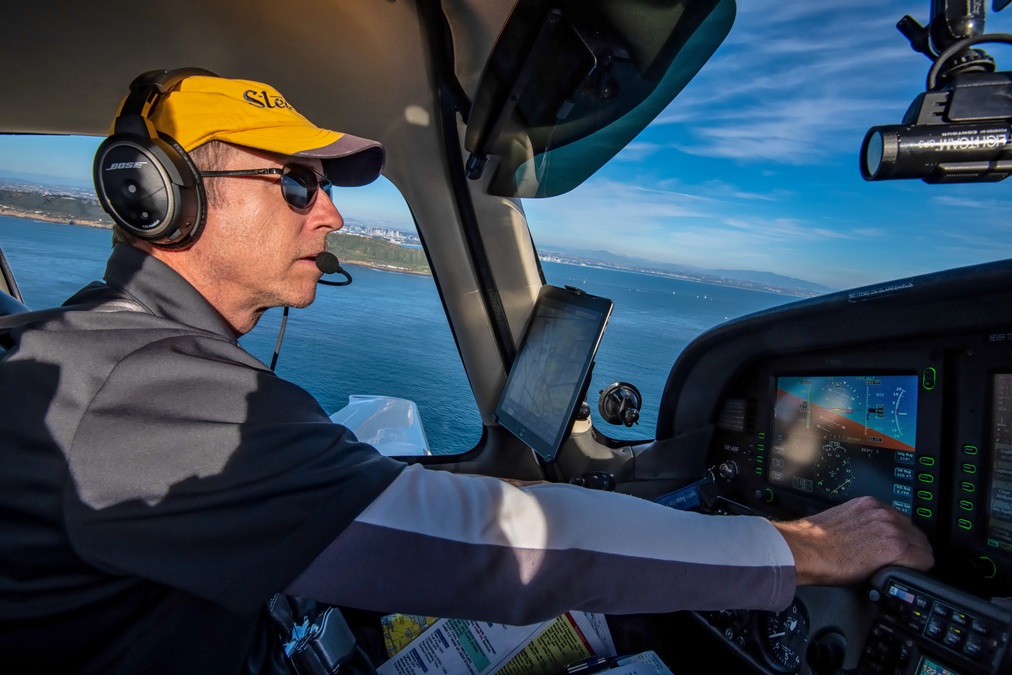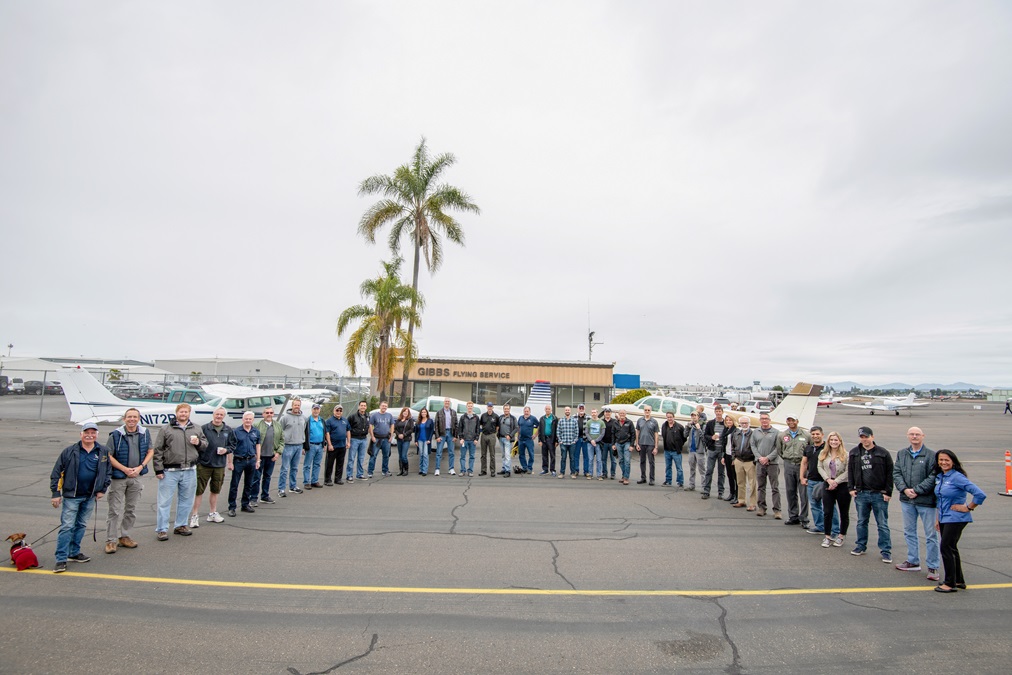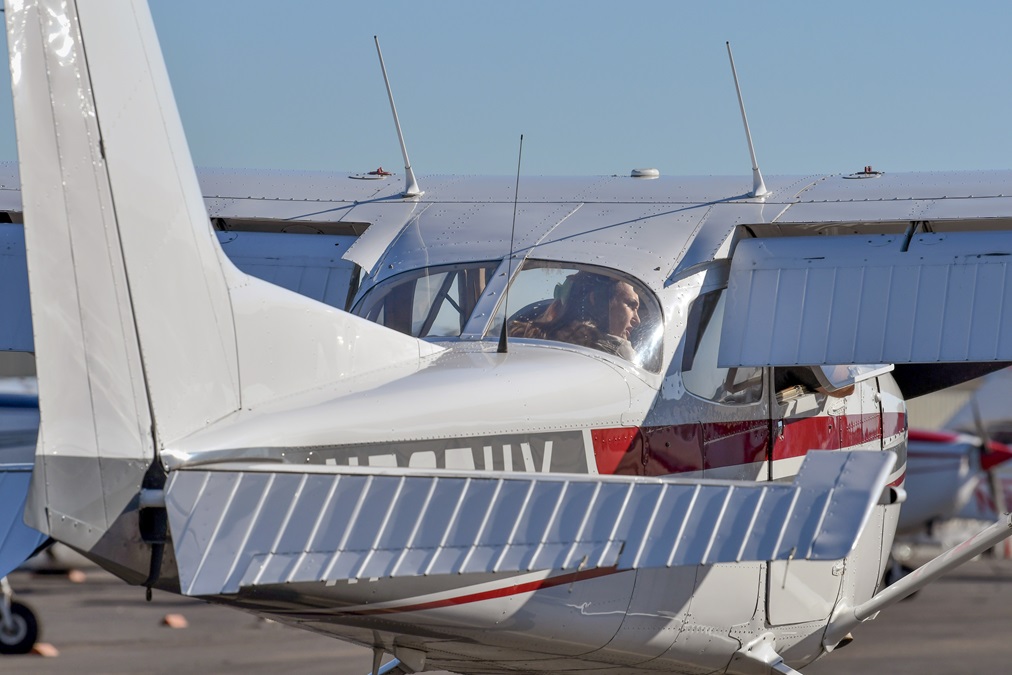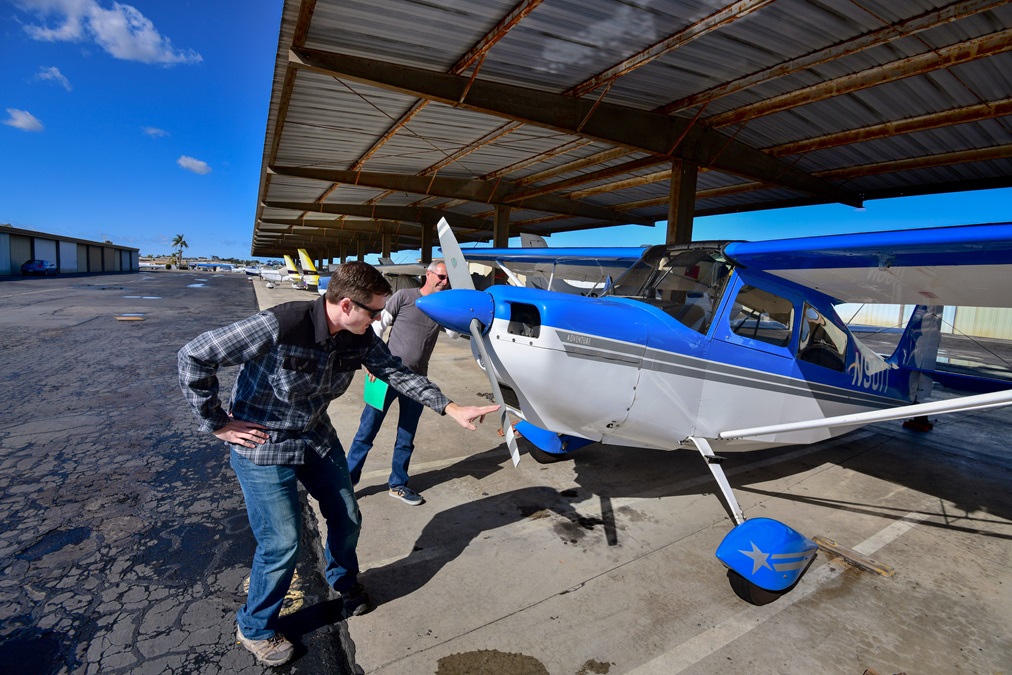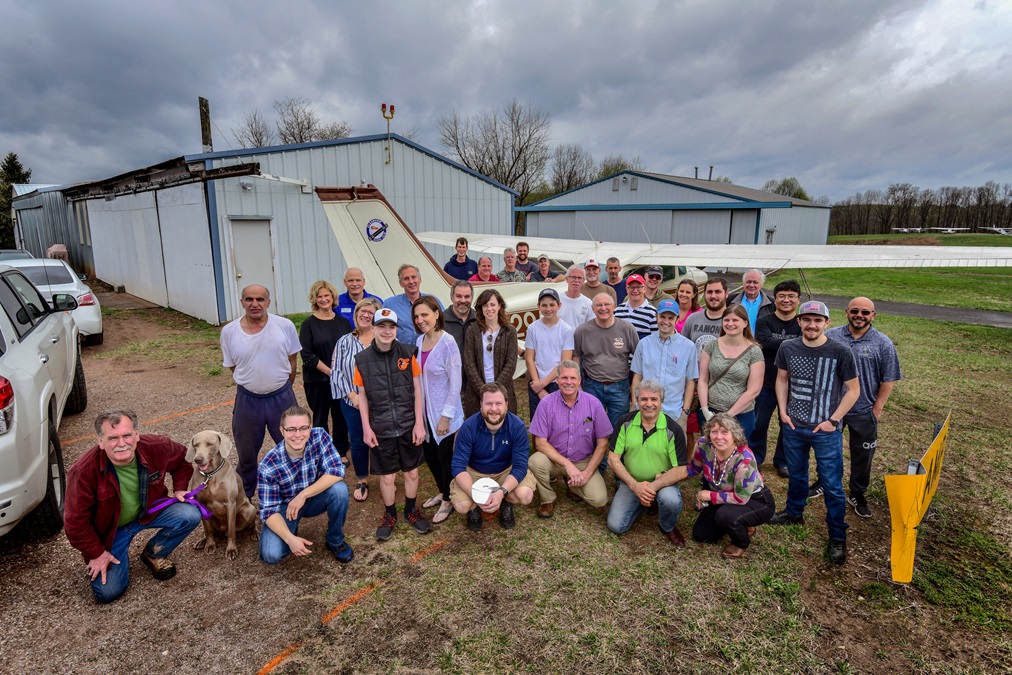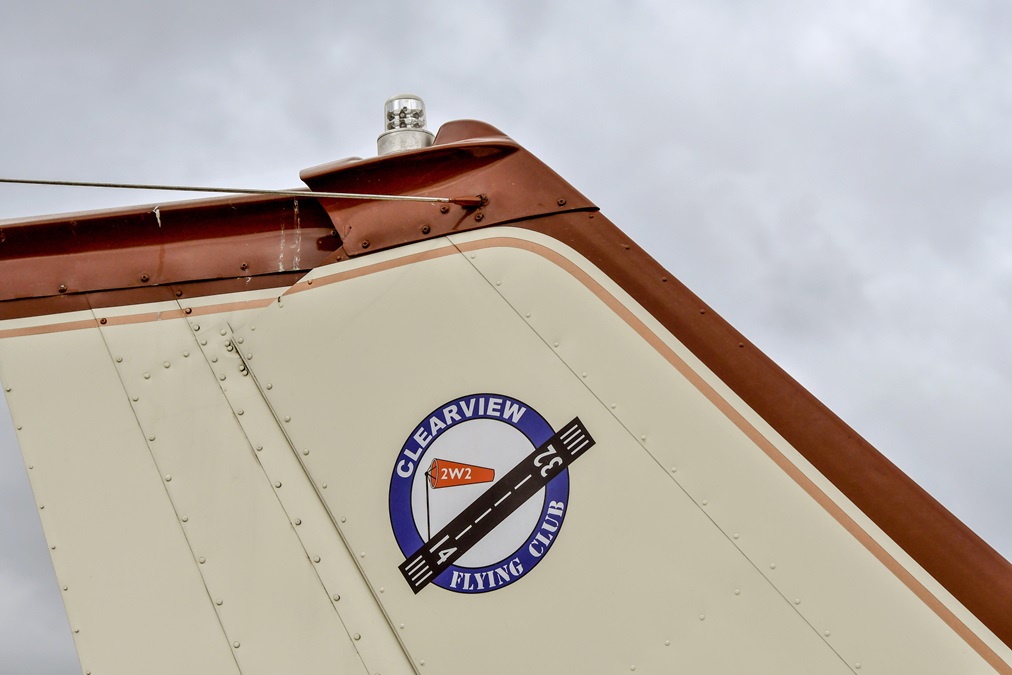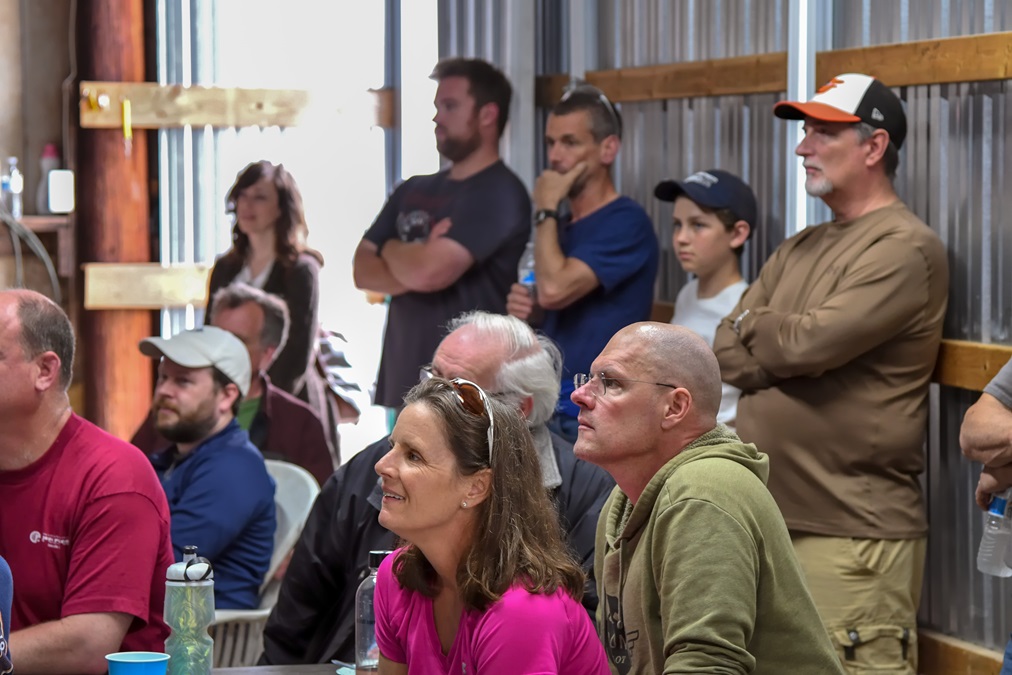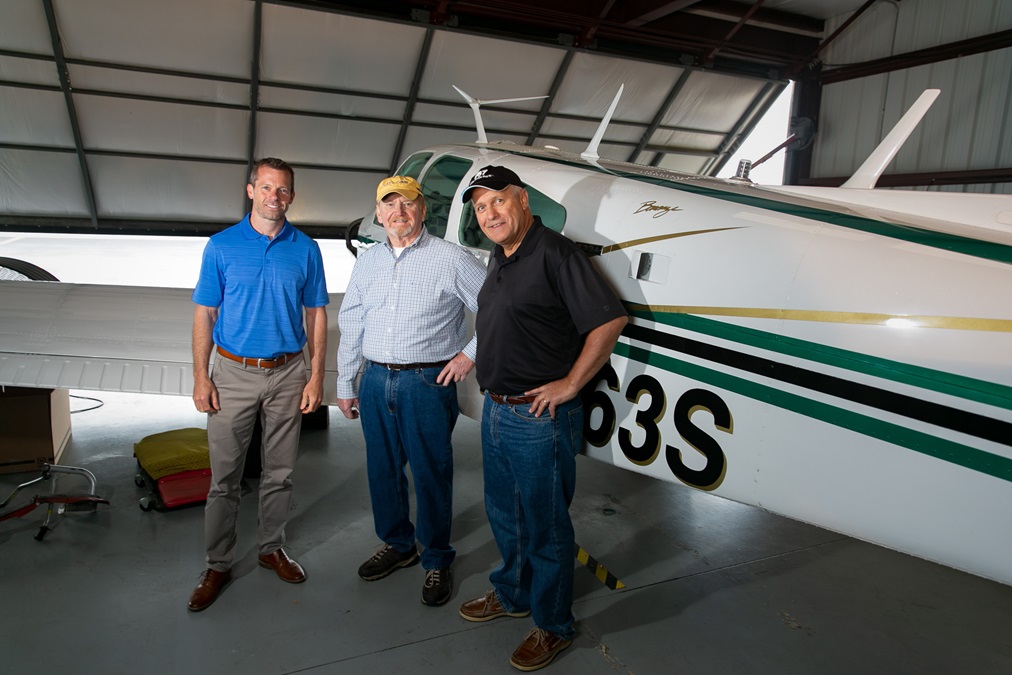Sharing aircraft
Co-ownership options are almost limitless
And what a tour it is. South along the shoreline, past the Torrey Pines Golf Course, Mount Soledad, and the Crystal Pier. Passing Mission Bay, we’re in Class B at 500 feet above the dark blue water, and Reid calls the Naval Air Station North Island tower controller requesting clearance into her airspace. “Cleared for the Bay Tour at 800 feet, advise prior to any altitude change,” she replies. We’re in!
Then we’re banking left around Point Loma and it’s sensory overload: the legendary Hotel Del Coronado is off to the right; North Island and its military aircraft are just ahead (we’ll continue the left turn to follow San Diego Bay around its perimeter); and moored Navy vessels mark the shorelines. Is that a submarine? Then Shelter Island and downtown San Diego fill the windscreen.
All too soon, the sun is settling toward the Pacific and Reid pushes the throttle forward for a maximum-angle climb to cross above San Diego International Airport, then drop back to Montgomery Gibbs Executive Airport, halfway between downtown and Marine Corps Air Station Miramar.
Then he makes a confession. “I bought a brand-new 2003 Cirrus that I had no business owning, except that I was able to lease it to Plus One Flyers”—a large flying club with four locations in the San Diego area. “I don’t mind sharing it, because I get to own a Cirrus.”
A numbers guy, Reid said that in the right flying club, a Cessna 172 or Piper Archer can pay for itself, while a high-performance airplane subsidizes the cost of ownership—which works for him. “And I’ve met some amazing people. The guys who fly my airplane become my friends,” he said.
This tale of three models of co-ownership shows that sharing aircraft ownership keeps costs down and can work at any scale, from two or three owners to a couple thousand.
Large club
Don’t call Plus One Flyers an air force; you’ll offend its many current and retired Navy and Marine members. The club, started in 1985, has 1,783 members, with about two-thirds on flying status; 78 aircraft; and four locations: its hub at Montgomery-Gibbs Executive Airport in San Diego, Gillespie Field, McClellan-Palomar Airport in Carlsbad, and Ramona Airport.
“We’ll probably crack 1,800 members this year,” said Dave Eby, the club’s vice president and chief operating officer. Scheduling, like most clubs, is online, and there are a few paid staff members. All the aircraft are leased. “Most of the owners who leave, sold their airplane—often to another club member,” he said.
Plus One’s goal was eight or nine aircraft. “It went way beyond our expectations.” —Gus Schwartz, founderThe best-equipped aircraft, not those with the lowest hourly rates, fly the most, Eby noted. Plus One averaged 2,400 hours per month in 2018, and 2,100 in 2017, he said. The fleet includes a lot of Cessna 172s and Piper PA–28s, as well as Beech Bonanzas, several Cirruses, a Diamond DA40, twins, tailwheels, aerobatic aircraft—and a Lake Amphibian. Flight training devices are available to help members maintain currency.
Owners are “kind of competitive,” said Larry Massaro, club president, who owns two Grumman Tigers—one leased to the club. “They want to be the most popular airplane. They’re competing by providing a quality product to the members.” For example, airplanes without Garmin navigators aren’t flying as much, he said. Members put a premium on aircraft with Automatic Dependent Broadcast-Surveillance traffic displays. “You don’t realize how busy it is here until you look at it on the scope.”
Dues pay Plus One’s fixed costs. “It doesn’t rely on aircraft rentals,” Massaro explained. “The club’s real job is to bring members, owners, and instructors together. We want to run it as a business, but we want to keep that club culture.”
Plus One began as an offshoot from another club, Flyers Inc., to lease some high-performance aircraft. “We found we needed more airplanes. The Plus One guys wanted to do touch and goes in something else,” said Gus Schwartz, who organized the club in 1985. “In order to get members, we did two things. We charged enough dues so we could hire someone to wash the airplanes—so the members wouldn’t have to.” And its insurance deductible plan makes members responsible for 30 percent of the deductible in the event of a claim.
A couple years later, Plus One absorbed Flyers Inc. The goal was eight or nine aircraft when most clubs had three or four, Schwartz said. “At the most, a dozen. But we had such a good deal for owners,” he said. “It went way beyond our expectations.”
There are quarterly membership meetings, and Plus One has a strong safety focus, Eby said. If fuelers put 48 gallons into an aircraft with a capacity of 52 gallons, the pilot of its last flight will get a talking-to. Annual flight reviews are required.
Paul Miko of Santee, California, was looking for an airplane to rent and Plus One offered a Citabria. “I wanted to fly something a little more interesting than a Cessna,” he said. He and one of his aerobatic students, Bryan Jones, each bought a Great Lakes Sport Trainer and leased them to the club. “Most of the guys who fly with us are pursuing competition, but some just want to do loops and rolls,” Miko said. “It became a little club within a club.
“The club makes [aircraft] ownership possible for some people,” he said. “I have no business owning an airplane, but I own two because of the club.”
A member since 1990, Syd Logan of Carlsbad, California, alternates between a Piper Cadet, an Arrow, and others. “I couldn’t do this as a private owner,” he said. “The variety of aircraft for the mission is nice. There have always been enough aircraft here, and enough types of aircraft. This is a great environment for exploration.”
The social aspect is critical to John Scott of San Diego, a two-plus-year member who heard about Plus One before moving from a smaller flying club in Florida. “I know from my personal experience that if I didn’t have friends who flew, I wouldn’t have reasons to fly,” he said. Scott started a Facebook group for Plus One that has 500 members. He coordinates a monthly happy hour at a restaurant on the field, and unofficial fly-outs—for whitewater rafting, hiking, and off-roading in Jeeps—have drawn a dozen airplanes, and 26 people. “It’s far exceeded what I ever expected,” he said.
Smaller club
The Clearview Flying Club couldn’t be more different than Plus One Flyers, although its 35 flying members share the same passion for flight. Members meet monthly at 1,840-foot-long Clearview Airpark in Westminster, Maryland. Walt Tegeler, president of the three-year-old club, pushes his Aviat Husky out of his hangar to make room.
“In three years, we’ve got three airplanes. We own them outright and we’ve got money in the bank.” —Walt Tegeler, Clearview Flying Club presidentWhy would a pilot who already owns two airplanes want to start a flying club? “I realized I was the youngest pilot at Clearview Airport—and a lot of them weren’t flying,” he said. Tegeler, then 57, spent more than an hour at Sun ’n Fun 2016 talking with AOPA President Mark Baker, who emphasized the benefits of a club. “I got back and said, ‘I’ve got to get a club started.’”
Two months later, with the permission of the privately-owned airport’s owner, the club had its first members. A couple weeks later it owned a Cessna 150, and a Cessna 172 soon followed. A Piper Cherokee 180 later joined the fleet.
Social (nonflying) members are important to have, Tegeler said. “That brings a lot of interest; they bring their friends along.” In addition to monthly meetings with food and guest speakers, the club hosts movie nights during the summer and a fly-in picnic the Saturday after Labor Day. A poker run is popular, and informal fly-outs are common.
AOPA’s flying club resources were invaluable, he said. “We had no clues legally how to do it.” And Clearview is already giving back; Dave Berry, the club’s secretary, is working with a newer club nearby on joint events.
Jason Ashbaugh of Woodstock, Maryland, completed his private pilot certificate at the club a year and a half ago. Ten years earlier, he’d logged 10 hours of training at another airport. “I couldn’t afford it,” he said. “I love the club. The planes are ours. You get that sense of ownership.” He also knows they’re well maintained.
John Orzechowski of Frederick, Maryland, completed a private pilot ground school and took a demonstration flight while visiting Clearview. “They had an opening, so I joined,” he said. After several cross-countries to New Jersey and other destinations, he plans to start on his instrument rating this year. “The instructors are trying to share their love of flying,” he said. “It’s a great group of people here.”
Adam Int Veldt of Taneytown, Maryland, the club secretary, earned his private pilot certificate in 2003 and had been out of flying for 15 years. He started checking out flying clubs in January. “This was the best price and had the most access to different aircraft types,” he said. “It’s nice here because you’re around other pilots all the time.” His wife, Sharon, is a regular passenger and is thinking about starting lessons—something she probably wouldn’t have considered without coming to club meetings.
“In three years, we’ve got three airplanes. We own them outright and we’ve got money in the bank,” Tegeler said. Monthly meetings, weekly emails, and a Facebook page help to keep everyone involved. And the club recently added five student flying members, which means a fourth airplane may be in its future. “If you learn to fly here, you can go anywhere,” he said.
Partnership
There was a time that an aircraft partnership was two or three owners, each with his or her name on the title. Different, more flexible arrangements are common today, and some partnerships run more like flying clubs. Often a limited liability company (LLC) is formed to own or lease a club’s aircraft.
Jim Johnson of Lebanon, Tennessee, has been flying for 54 years. He’s owned a number of airplanes, and is in several partnerships—including the Beech Bonanza F33A he bought when he was looking for an older Cessna 182 he’d hoped to split four ways (it’s a long story). The Bonanza’s hangared at Sumner County Regional Airport in Gallatin, Tennessee, northeast of Nashville.
The retired airline pilot created an LLC to own the airplane with a former co-worker, still flying internationally. “It was a high-time engine when we bought it, but otherwise it was a beautiful airplane,” he said. “We just put gas in it and split everything. There’s no hassle with it that way.” Although splitting the costs, skipping reserve funds, and not assessing an hourly charge are unusual for a partnership, it’s worked for Johnson and co-owner Nils Johansen. “I think a lot of people would feel better if there was a legal document,” Johnson said.
When the Bonanza’s overhaul came due, the pair could have split the cost. Instead, they sold one-third of the airplane to a third pilot, using those proceeds to buy a factory-new engine—which cost one-third of the F33’s post-overhaul value. The partners also wanted to see the airplane fly more. “I don’t really need an airplane like that, but I like having it. I could not justify having this Bonanza on my own—for the same money, I’d be flying a 172,” Johnson said.
Johnson won’t advertise for a partner. “You’ve got to know the person,” he said. Scheduling by text message hasn’t been a problem and the partners’ usage has been compatible, although they’re setting up a Google calendar for coordination. “If it’s something like a fly-in breakfast, we’ll all hop in the airplane and go together. We enjoy each other’s company,” Johnson said. “It’s worked out really well.”
Jeff Hatcher of Hendersonville, Tennessee, bought in six months ago. He’s a 400-hour private pilot with a fresh instrument rating. He had been involved in the maintenance of his flying club’s Cessna 172, so ownership wasn’t daunting. “The next step was a partnership,” he said.
Hatcher knew Johnson from around the airport, and that he was involved in other partnerships. “I talked with these other guys and asked them how it went,” he said—considering it due diligence. Because Hatcher had only met Johansen once, he grilled mutual acquaintances. “It’s kind of like a job interview,” Hatcher said.
Johansen, of Gallatin, Tennessee, trusted Johnson’s recommendation of Hatcher. It’s a different dynamic to know someone so well—as he and Johnson did—and buy an airplane, than to add a partner to an existing aircraft. Hatcher is “doing a great job,” said Johansen, who is glad to see the airplane being flown more. This is Johansen’s first ownership experience, as well. “I’ve never owned an airplane, but I’ve always dreamed about it,” he said.
Hatcher paid the insurance premium’s increase, and said it wasn’t too bad. Completing the instrument rating helped, as did additional training from the American Bonanza Society’s Beechcraft Pilot Proficiency Program. Another partner accompanied him on his first 20 hours in the airplane.
“I’ve always dreamed of owning a Bonanza. For me, being only a 400-hour pilot, being able to get in a partnership with two [airline transport pilots]—it’s a learning opportunity.” It’s helped him expand his horizons, flying trips to eastern North Carolina and western Tennessee. And his wife really enjoys flying in the Bonanza, too. “She never really liked the Cessna,” Hatcher said. “Now she’ll fly anywhere with me.”
Email [email protected]

